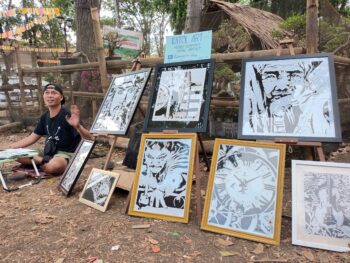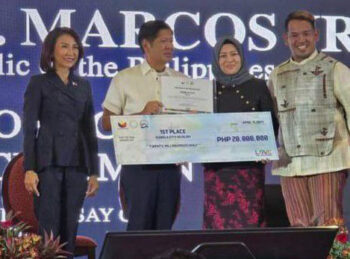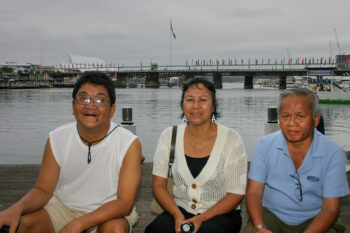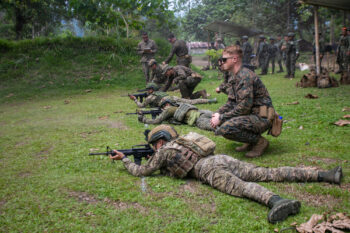By Armel Grace M. Lugod
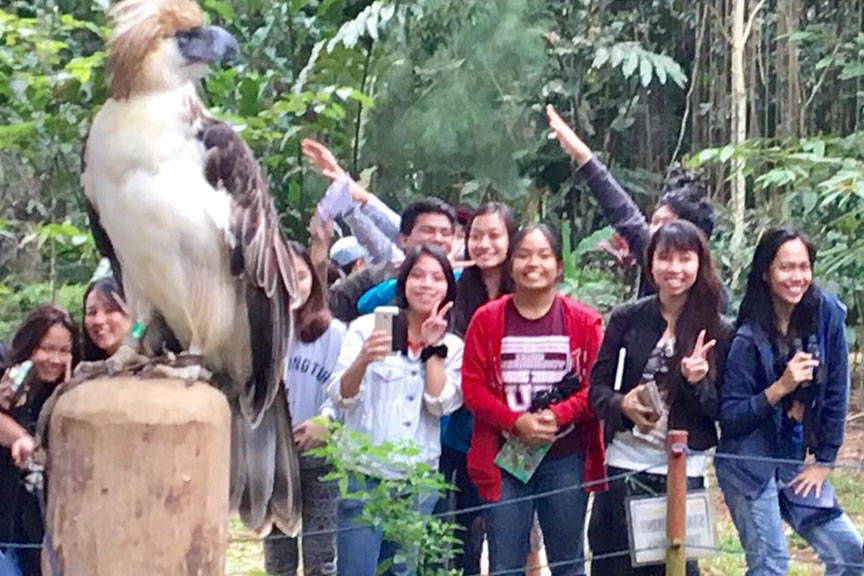
DAVAO CITY (MindaNews / 9 March) – Biodiversity is the existence of various life forms in a common setting – a brief and simple definition I wrote on my one-fourth sheet of paper during our Biodiversity class. After several class discussions plus a few bouts of bird watching, camping and trekking at the Philippine Eagle Center (PEC) and Barangay Sibulan last February 4 and 5, my understanding and appreciation of our local flora and fauna significantly increased. Back then, I saw the world like a rainbow of only a few colors. Sooner, I began to gradually see the full color spectrum.
I have more fingers in my hands than the number of birds I can name before I got to experience bird watching. I never thought of it as a nice hobby until I finally got to try this kind of outdoor activity with my classmates at the PEC. I’ve been to PEC several times, perhaps it was my fourth visit as I could recall. Only then did I get to hold real binoculars for the first time, contrary to the toy version I used to bring there as kid during our kindergarten field trip.
I can really say that the recent early morning bird watching at the PEC was such a delightful experience. A certain kind of feeling of happiness just flows from inside of me every time I get to see another variety of bird through the lenses of the binoculars. An hour of roaming around the center, looking for the peckers, starlings and doves that perch on empty branches, cry their calls or make their flights – was altogether a great kind of fun and learning.
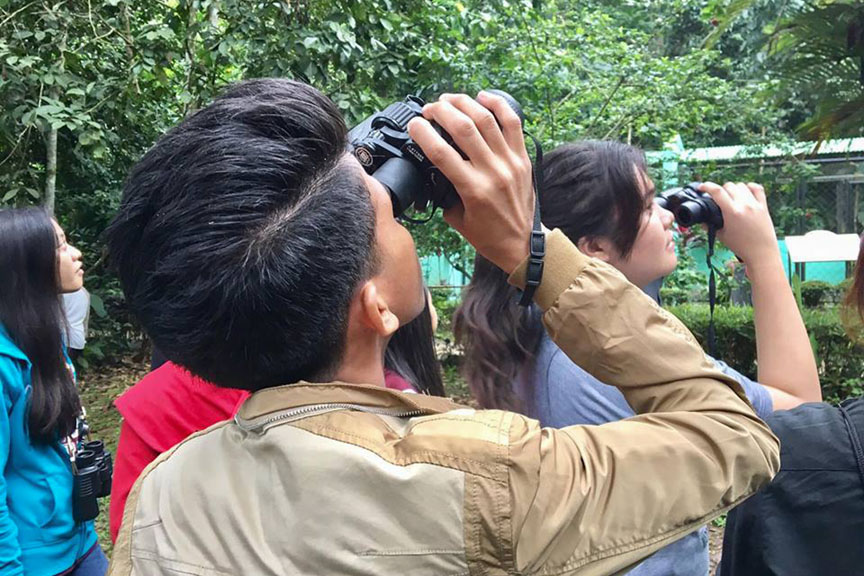
Rufous-lored kingfisher, white-eared brown dove, and red keeled flowerpecker… are the names of some of the species of birds we have encountered during the bird watching activity. We actually saw 26 birds flying freely, and we were told that 10 of them that can only be seen in the Philippines. These are the kind of birds whom birders from other countries long to see. This fact makes me feel a lot luckier to have lived in the Philippines where I can watch these birds in just a class trip.
My knowledge and appreciation on bird species significantly increased through that activity, supplemented with the multimedia presentations of several speakers. My favorite video presentation was the one that showed the life of Kalayaan the eagle, from a very young little one who depended on its parents for food to a bold bird who can hunt its own prey. The video captured the growth of one mighty Philippine eagle and several moments during its juvenile form before flying to the vast sky, into the wild.
Among all the others, the fact that fascinated me the most was learning about how eagles mate. The entire process of courtship is elaborate yet precise and requires a huge amount of persistence on the male eagle’s part. These made me appreciate the divine designs of nature’s ways to thrive and propagate.
Aside from the birds, we also learned more about other Philippine endemics like the various species of bats and tarsier. All these species, along with the eagles and birds, depend on the balance of biodiversity within a specific place. The interaction of these organisms in the same setting defines Philippine biodiversity itself. It is quite overwhelming to imagine how such a small country as ours can hold more kinds of unique species than other countries with wider land areas among the entire world.
After all the visuals and learning through media, the actual exposure on site was the most exciting part of the trip. The entire class went to Barangay Sibulan, the homeland of our Bagobo-Tagabawa brothers and sisters. Away from the noise and urban blight, I admired how pure, simple and peaceful the kind of life these people have.
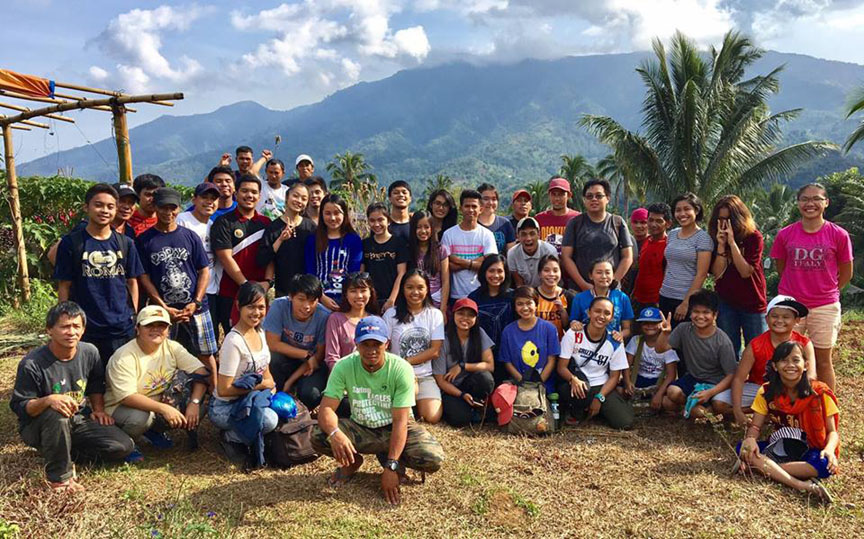
This Lumad tribe takes the responsibility of taking care of their “Yutang Kabilin,” a vast land of rich biodiversity at the outskirts of the city. They even have volunteers for the job called the forest guards who oversee the peace and balance between nature and human activities within the vicinity. One’s duty as a forest guard is never easy and to think that those valiant men do not get paid enough for their arduous task. What a commendable act worthy of distinction.
The most challenging but self-enriching part of the field trip was the river trek to Ma-long Falls. We had to endure an hour’s hike of sloping terrains on dry land before we finally experienced the trek along the river. Along the way, we took turns at looking through the lenses of the binoculars. I felt lucky enough to encounter a snake-eating eagle as it made its glorious glide up above.
Under the sun, in the middle of the verdant mountains, there we are, a group of students learning about biodiversity in its purest setting. The picturesque sceneries from various angles got well imprinted on my senses. I can perfectly recall the feeling, the chirping of the birds and crickets, the cool mountain breeze. I felt the earth beneath my bare feet as we soon trekked along the stony river areas. The diverse textures of fine sand, warm stone, gushing water, soft mud, pile of leaves and fallen twigs I had made contact directly under the soles of my feet seemed like nature’s perfect massage to my soul. I marveled at the rich biodiversity in front of me.
The trip introduced us to a variety of life forms that are richer than our limited imaginations and expectations about reality. An exposure to the vast plethora of diverse forms of life surely brought me to a state of awe. Now I see biodiversity more than the coexistence of species in a certain setting but as miracle of life.
(Batang Mindanaw is the youth section of MindaNews. Armel Grace M. Lugod is a Senior BS Architecture Student at University of the Philippines in Mindanao.)




